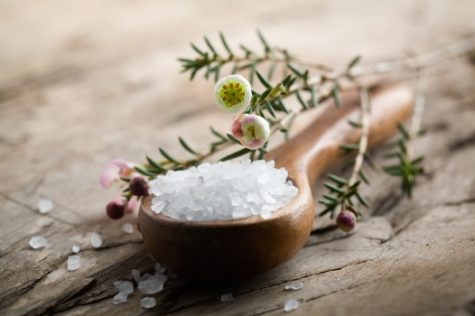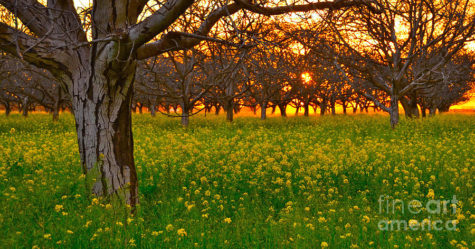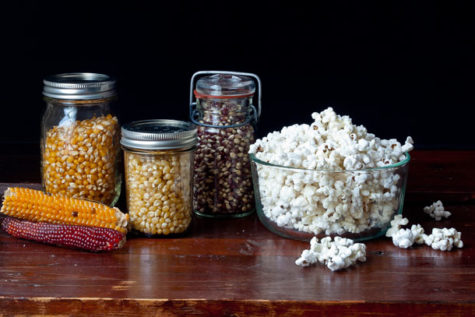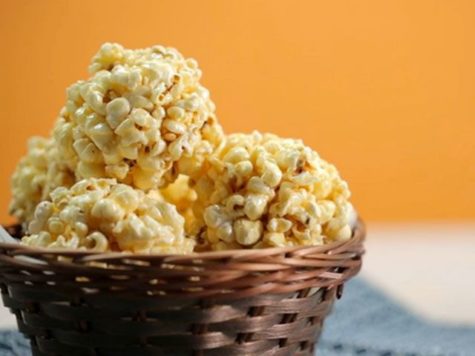Daily Archives: January 19, 2019
Dwynwen was Wales’ patron saint of lovers, and January 25th is the Welsh equivalent to St Valentine’s Day. However, it is a romantic country, and they also celebrate St Valentine’s day on 14 February!
She is also known as:
- Dwyn
- Donwen
- Donwenna
- Dunwen
Her most well known saying is “Nothing wins hearts like cheerfulness”
The story of Dwynwen dates back to the 5th century. She was a beautiful Celtic princess, the prettiest of all the King of Wales’s 24 daughters (Brychan Brycheiniog of Brechon also had 11 sons!).
Dwynwen was in deeply in love with the handsome Maelon Dafodrill, but her father had already betrothed her to another, so he refused to give them his consent. On finding out, Maelon cruelly forced himself upon her and fled. With a broken heart, and grieved to have upset her father, Dwynwen ran to the woods and begged God to make her forget her love for Maelon.
Exhausted and aungished, Dwynwen eventually fell asleep. Whilst dreaming, an angel visited her and left a sweet smelling potion. This would erase all memories of Maelon, and his callous heart would also be cooled, but so much so that he turned to ice. Dwynwen was horrified to find her love frozen solid. She prayed again to God, who answered her prayers by granting her three wishes.
Her first wish was to have Maelon thawed and for him to forget her; her second, to have God look kindly on the hopes and dreams of true lovers whilst mending the broken hearts of the spurned; and her third was for her to never marry, but to devote the remainder of her life to God, as thanks for saving Maelon.
Dwynwen devoted the rest of life to God’s service. She became a nun and lived on Llanddwyn Island on the western coast of Ynys Mon (Anglesey), an area accessible only at low tide. She founded a church there, remains of which can still be seen today. After her death she was declared the Welsh Patron Saint of Lovers and ever since, Welsh lovers have looked to St Dwynwen for her help in courting their true love, or for forgetting a false one.
On the island there is a well where, according to legend, a sacred fish (an eel) swims. It is said that the eel can predict the happiness of relationships.
Her well, a fresh-water spring called Ffynnon Dwynwen, became a wishing well and place of pilgrimage, particularly for lovers because of the story above. The tradition grew that the eel in the well could foretell the future for lovers – ask questions and watch which way they turn. Women would scatter breadcrumbs on the surface, then lay her handkerchief on water’s surface; if the eel disturbed it, her lover would be faithful.
Visitors still go to the well today, hoping that the water will boil, meaning that love and good luck will follow them. Her well continues to be a place of pilgrimage; there’s a tradition that if the fish in the well are active when a couple visits, it’s the sign of a faithful husband.
Visitors would leave offerings at her shrine, and so popular was this place of pilgrimage that it became the richest in the area during Tudor times. This funded a substantial chapel that was built in the 16th century on the site of Dwynwen’s original chapel.
Prayer To St Dwynwen
Oh Blessed St. Dwynwen, you who knew pain and peace, division and reconciliation. You have promised to aid lovers and you watch over those whose hearts have been broken. As you received three boons from an Angel, intercede for me to receive 3 blessings to obtain my heart’s desire (state request) and if that is not God’s will, a speedy healing from my pain; your guidance and assistance that I may find love with the right person, at the right time, and in a right way; and an unshakeable faith in the boundless kindness and wisdom of God and this I ask in the name of Jesus Christ our Lord. Amen.
St. Dwynwen, we beseech thee, comfort lovers whose vision is unclear. Send mending to those with love lost. Protect companions. In your name we seek to do the same. In your name we choose love first. With the love of you, Mary and of Jesus Christ. Amen.
Sources:
It is important to remember that the Moon cycles through the signs of the zodiac every couple of days, and it’s important to check the time of day that it enters and leaves the sign, because that will vary depending on your geographical location. If in doubt, you can use this moon sign calculator.
Cancer rules security, myths and archetypes, nurturer, looking into the past, traditions, the family in general, cooking and eating, planting, fishing, home and hearth, restaurants, good for listening to others, helping others with problems, sentiment, keeping secrets, doing things at home or for the home, roots, integrity, graves, underground places, inherited traits, weather and climate, gentle self-effacing humor, psychic, land and real estate, fresh water, water in general, especially in lakes, rivers and streams, mines and mining.
Cancer presides over anything to do with the home, family, food, nurturing, the mother, women in general. Things tend to last, as Cancer is a clingy sign. Good for love spells, weather spells, altar consecration, blessing the home, mediumship, psychic endeavors, inciting over-emotionalism. Spells for the success in buying land, purchasing real estate, a decent place to live, and reconciling family members are best performed when the Moon is in this sign. With love relationships or marriages begun when the moon is in Cancer, if the parties break up, they often tend to reunite.
This is the sign the Moon rules, and here she is very strong. Magick corresponding to the Moon is successful when the Moon is in Cancer. This would include spellwork for the following:
- Home
- Mother, family, children
- Food
- Psychic abilities
- Divination
- Finding one’s roots
- Past lives
- Real estate
- Altar consecration
- Chalice consecration
- Establishing a coven
- Initiation
- Finding or buying a home
- Weather workings
- Planting and raising food crops
- Contacting Goddess
- Starting a Tradition
Cancer is a very sensitive sign of the zodiac, and this is evident in its effect on people. The time of the Moon in Cancer is favorable for establishing personal affairs, family relations, and the development of intuitive abilities. During this period, it is easier to learn to understand people, it is also favorable for the development of the restaurant business and the sale of flowers.
These days we are more receptive and suggestible. No need to rush things. If someone in your environment is naughty and scandalous – he wants attention and warmth. Show sympathy, and the person will thank you for your loyalty in the future.
Cancer is a fertile zodiac sign, so it is the best time to plant fruit crops, or any other plants that you want. In addition, astrologers claim that the moon in Cancer helps couples to conceive a girl.
Note:
Do NOT have surgical procedures performed on the stomach at this time.
Moon Phase Info:
- New Moon in Cancer– the time to solve family matters and domestic issues.
- Waxing Moon in Cancer– the best period for frank conversations with your soulmate.
- Full Moon in Cancer– a day of charity, volunteering, help to the needy.
- Waning Moon in Cancer– a time of nostalgia, meetings with old friends.
Ritual Bath For Moon in Cancer
Creating a purifying salt bath (to purify your aura), filled with eucalyptus (to aid in healing emotional ailments), lavender (to help you relax), rose quartz (to mend your heart and confidence), amethyst (to revive and treat your emotional upsets), and moonstone (to evoke the Moon Goddess in balancing out your best emotions) will boost your auric field and attune your inner vibration, allowing you to release old sentiments by cleansing your body, mind, and sprit.
Moon Water Recipe
- 6 drops of Eucalyptus Oil or Eucalyptus Leaves
- 4 Lavender Oil or Fresh Lavender
- Rose Quartz
- Amethyst Crystal
- Moonstone
- Himalayan Sea Salt, Epson Salt, or Kosher Salt
Place rose quartz, amethyst, and moonstone in a cup of water. Charge a cup of water under the Moon’s glow during the day. You can leave the cup by the window sill to absorb the lunar energy.
The Bath
Run a warm bath. Put a cup of salt in the bath water. Place 6 drops of eucalyptus oil or leaves in bath (the number 2 is the numerological number of the Moon, therefore, we are using even numbers to honor the Moon Goddess). Place 4 drops of lavender oil or flowers in bath. Add the rose quartz, amethyst, and moonstone to water.
Enter bath and close your eyes, meditating on the stillness of your mind and the warmth of the water. Put on soothing music, lay in the bath. Let the water heal your mind, body, spirit, and heart by washing away the pain and frustrations you feel within.
Sources:
Tu Bishvat occurs on the 15th day of the Hebrew month of Shevat. In 2019, this date falls on January 20. Tu Bishvat (Tu B’Shevat), also called “Rosh HaShanah La’Ilanot” (New Year of the Trees) is kind of like a birthday for all trees. Trees planted before this day, even by one day, will turn a year older on Tu Bishvat. Traditionally fruit from trees may not be eaten for the first four years, so the age is important.
Here are some simple ways to celebrate The New Year of the Trees
- Pick fresh fruits and vegetables at a local farm.
- Plant trees, seeds, or start an herb garden.
- Build a birdhouse to hang in a tree.
- Eat the seven significant species of the land of Israel: wheat, grapes, barley, figs, pomegranates, olives, and dates.
- Organize a park clean-up to collect litter.
- Make something for your home with reclaimed wood.
- Take some time to research your own ancestry and assemble your family tree.
- Commit to recycling paper goods. If you don’t already have one, get a separate bin and you’re all set!
- Host a Tu B’Shevat Seder.
In the 16th century, the kabbalist Rabbi Yitzchak Luria of Safed developed a Tu Bishvat seder. The fruits and trees of Israel were given symbolic meaning. Eating ten specific fruits and drinking four cups of wine in a specific order while reciting blessings would bring people and the world closer to spiritual perfection.
How to Lead a Tu Bishvat Seder
Set up your table as for Passover: white or other nice tablecloth, good dishes, flowers, wine, and juice. There is no requirement to light candles, but scented candles add a nice touch and a festive glow. Either one person can lead the seder, reciting each reading and making the blessings, or everyone can take turns.
The directions concerning which fruit to locate and the mix of the wines should be read aloud. As each piece of fruit and each cup of wine is being considered and blessed, that object is held by the reader. After each blessing, the participants taste the fruit or sip the wine.
Hand Washing
Fill a large bowl with flower-scented water and float a small cup in it. Carry the bowl from person to person or set up a washing station in a corner. Feel how nice it is to place your hands over the bowl and have someone pour warm water over your fingers. Have towels ready.
Say this blessing
Barukh ata Adonai,
Eloheinu Melekh ha-olam,
asher kidshanu b’mitzvotav,
v’tzivanu al netilat yadayim.
Blessed are You,
Source of all life,
Who commands us to ritually wash our hands.
Note: Some may choose to forego this blessing, since it is traditionally recited upon washing the hands before eating bread, which is not eaten here.
First reading
Reader: And God said: Let the earth put forth grass, herb-yielding seed, and fruit-tree-bearing fruit after its own kind, wherein is the seed thereof, on the earth. (Genesis 1:11)
Reader: In the 16th century in northern Israel, in the spiritual town of Tzfat (Safed), the Jewish mystics created the Tu Bishvat seder. They recognized the many and varied dimensions of God’s creation and used the fruits of Israel to symbolize their existence.
The First Cup of Wine
This cup of white wine or grape juice symbolizes winter and the mystical dimension of atzilut, or emanation, at which God’s energy infused the creation process with initial life.
Barukh ata Adonai,
Eloheinu Melekh ha-olam borei peri ha-gafen.
Blessed are you,
Source of all life,
Creator of the fruit of the vine.
Reader: For Adonai your God is bringing you into a good land. A land of brooks of water, of fountains and depths springing forth in valleys and hills, a land of wheat and barley and vines and fig trees and pomegranates, a land of olive trees and honey, a land wherein you shall eat without scarceness, you shall not lack anything in it; a land whose stones are iron and out of whose hills you may dig brass. And you shall eat and be satisfied, and bless God for the good land, which is being given unto you (Deuteronomy 8:7-10).
The First Fruit
Fruit that is hard on the outside and soft on the inside, such as walnuts, coconuts or almonds. The hard shell symbolizes the protection that the earth gives us and reminds us to nourish the strength and healing power of our own bodies.
Barukh ata Adonai,
Eloheinu Melekh ha-olam,
borei peri ha-etz.
Blessed are You,
Source of all life,
Creator of the fruit of the tree.
The Second Cup of Wine
This cup of wine or grape juice is mostly white, with a little red mixed in, to symbolize the passing of the seasons and the mystical concept of formation and birth, often associated with water.
Barukh ata Adonai,
Eloheinu Melekh ha-olam,
borei peri ha-gafen.
Blessed are You,
Source of all life,
Creator of the fruit of the vine.
Reader: Blessed shall you be in the city, and blessed shall you be in the field. Blessed shall you be in the fruit of your body, and the fruit of your land, and the fruit of your cattle, and the young of your flock. Blessed shall you be in your basket and your kneading trough. Blessed shall you be when you come in and blessed shall you be when you go out (Deuteronomy 28:36).
The Second Fruit
This fruit is soft with a pit in the center — olives or dates [or peaches, apricots, etc.] — and symbolizes the life-sustaining power that emanates from the earth. It reminds us of the spiritual and emotional strength that is within each of us.
Barukh ata Adonai,
Eloheinu Melekh ha-olam,
borei peri ha-etz.
Blessed are You,
Source of all life,
Creator of the fruit of the tree.
The Third Cup of Wine
This cup of wine is mostly red with a little of white mixed in and symbolizes once again the change of seasons and the mystical concept of beriah, or creation.
Barukh ata Adonai,
Eloheinu Melekh ha-olam,
borei peri ha-gafen.
Blessed are You,
Source of all life,
Creator of the fruit of the vine.
Reader: Then God formed the human from the dust of the ground, and breathed into the nostrils the breath of life; and the human became a living soul (Genesis 2:7).
The Third Fruit
This fruit is soft throughout and is completely edible, such as figs, grapes, and raisins. This type symbolizes God’s omnipresence and our own inextricable ties with the earth.
Barukh ata Adonai,
Eloheinu Melekh ha-olam,
borei peri ha-etz.
Blessed are You,
Source of all life,
Creator of the fruit of the tree.
Serve a Vegetarian Dinner
A favorite is vegetarian lasagna and noodle kugel with fruit. Eat other exotic fruits that are placed around the table.
The Fourth Cup of Wine
This cup is all red, symbolizing the mystical concept of fire and the idea that within all living things dwells a spark of God.
Reader: And the angel of God appeared to him in a flame of fire out of the midst of a bush; and Moses looked, and behold, the bush burned with fire and the bush was not consumed (Exodus 3:2).
The Fourth Fruit
This has a tough skin on the outside but sweet fruit within–mangos, bananas, avocados, or sabra, a desert pear–and symbolizes the mystery of the world and our study of Torah. We are constantly seeking to uncover her secrets, and are continually nourished by her fruits.
Sources:
According to the book, 365 Goddess, January 19, is the day given to the Water Blessing Festival in Bulgaria. However, I think she must have been referring to the Anastenaria, a firewalking ritual performed primarily in May with a smaller one on an unspecified date in January, which culminates in a water blessing after the fire walking.
If you wish to celebrate today as a day of Water Blessings, here’s what you can do:
- Themes: Joy; Health; Cleansing
- Symbols: Water; Flowers; Fern; Birchwood
- Presiding Goddess: Kupala
About Kupala.
The Slavic goddess of springs and water, Kupala, whose name literally means “to bathe,” washes us with happiness and longevity. Oddly enough, she has a fire aspect too, which likely alludes to purification, protection, and transformation. Wildflowers, birch trees, and ferns are sacred to her.
To do today:
To bring a year filled with joy, contentment, and health, leave a natural-fiber cloth outside today to gather dew. Use it tomorrow to bathe in Kupala’s magic.
Take some flower petals to any moving water source (even a hose) and toss them on the stream. As you do, make a wish for something that will make you really happy. Let Kupala, in the form of the water, carry your wish toward manifestation.
To rid yourself of sickness, negativity, or a bad habit before the year gets really rolling, find a safe fire source (such as a candle that’s self-contained in glass). Put this on the floor and jump over it. As you do, say:
Old burns away; only the good, the good shall stay.
Old to new, old to new, Kupala, my heart renew.
This symbolically leaves the old behind and invokes Kupala’s aid in your efforts for positive change.
Source: 365 Goddess
National Popcorn Day is celebrated at the end of January, although its exact date is a matter of debate. Various sources report it as January 19; others claim it takes place on whatever day the “big game” falls on.
Why not use this day for some popcorn magick?
Then he thought if he had some milk, he would have popcorn and milk.
You can fill a glass full to the brim with milk, and fill another glass of the same size brim full of popcorn, and then you can put all the popcorn kernel by kernel into the milk, and the milk will not run over.
~from Farmer Boy by Laura Ingalls Wilder
Magickal Associations of Corn:
- Gender: Feminine
- Planet: Venus, Pluto
- Element: Earth
- Season: Lammas and Mabon
- Deities: agriculture and solar deities
- Correspondences: Protection, Luck, Divination, Blessing, Offering, Fertility, Abundance
Popcorn Offerings
I’m not sure if you are aware of it, but nature spirits like popcorn. I have it on authority from Chickadee who has had complex relationship with a number of nature spirits, that they almost all like popcorn, particularly the sea gull spirits. This is a great way to introduce children to the idea of a relationship with the land…however, because of the (practical) negative implications of feeding wildlife, it is important to not leave food out too much or too often and to change the area where offerings are left, so that wildlife do not become accustomed to it.
Popcorn Chains
At Yule, when we decorate our tree, we include a popcorn garland. Part of our tradition when we make it is to use what we add to say a thank you and a blessing for someone we love (not for every single piece, but for our “family strand” of garland that that goes on the top of the tree).
Stringing magic popcorn into edible jewelry is an easy way to add a bit of extra love or joy or healing blessings for the kids, and it even makes a great sibling or parent gift. A few months ago, when my daughter did something especially naughty, got it in her head to make a “sorry necklace” for her brother. After eating caramel popcorn on a string, he was in a better mood to forgive her…
Popcorn Fortune Balls
This should be pretty obvious–think fortune cookie in a popcorn ball. Or, if you are packing a lunch for a trip or a day at school, put in an encouraging note or positive thought. Put a popcorn fortune ball on the end of a straw, and add some pipe-cleaner petals for a edible bouquet gift from the kids. All you need are some small strips of paper with a message written on them, and a popcorn ball recipe–stuff the message in the center of the ball as you shape it.
Venus Popcorn Spell
Sharing a bowl of popcorn with someone you love is one of life’s simple pleasures. Adding a sprinkle of practical magic may be akin to “gild-ing the lily,” but who doesn’t like to stir up a little love magic now and then? Rent a favorite romantic movie tonight. Pop some fresh popcorn, add butter if desired, and season with love herbs and passionate spices as suggested below. Say as you do so: “Venus, bless us with love and beauty.”
- Garlic salt, chili powder, and red pepper-to rekindle your love life.
- Parmesan cheese and dried basil-for Italian style romance
- Chili powder, garlic, and basil-fiery passion.
- A touch of cinnamon, sugar, and vanilla powder-for comfort and warmth.
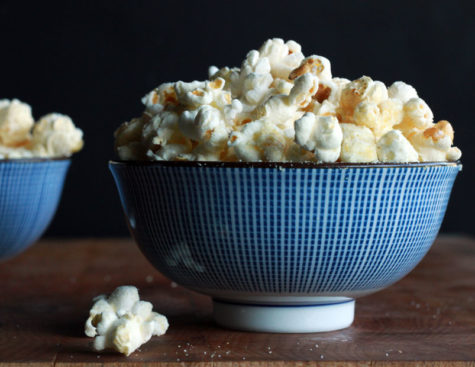 More Popcorn Day Activities
More Popcorn Day Activities
- Guess the Amount: Fill a container with popcorn kernels and have everyone guess. The winner gets a nifty prize.
- Popcorn Air Hockey: Can you “volley” the kernel back and forth 20 times without letting it fall? For this you will need: a flat surface (table), straw (to blow), coffee stirrers (as paddles) or hands (as paddles).
- Popcorn Relay Race: Holding popped corn in a spoon, run relay races to see which team can keep the popped corn in the spoon longest without spilling it.
- Popcorn Basketball: Can you flick a piece of popcorn into the basket? Muffin tins or small cups can be used for the basket.
- Make a Popcorn Word Search: Use these words: popcorn, pop, kernel, explode, heat, moisture, grain, snack, crunchy, butter, oil, salt, fiber, bag, hull.
- Write a Popcorn Haiku (5, 7, 5 syllable pattern poem): Like this!
Oil, kernels, heat, time
Many loud explosions heard
Pop, crunch, snack time. Yum!
- How many words can you make from this phrase?
“Fresh hot popcorn”, “Popcorn tastes good”, “I like popcorn”, “Hot buttered popcorn”

About Popcorn:
Popcorn has been around for 5,000 years. Archaeologists and researchers believe it to be the oldest of a group of five sweet corns. Popcorn originated in Mexico but quickly spread globally. Popcorn ears over 5,600 years old were found in New Mexico in 1948 and 1950, they are the oldest ears of popcorn known.
Popcorn was integral to early 16th century Aztec Indian ceremonies. Bernardino de Sahagun writes:
“And also a number of young women danced, having so vowed, a popcorn dance. As thick as tassels of maize were their popcorn garlands. And these they placed upon (the girls’) heads.”
In 1519, Cortes got his first sight of popcorn when he invaded Mexico and came into contact with the Aztecs. Popcorn was an important food for the Aztec Indians, who also used popcorn as decoration for ceremonial headdresses, necklaces and ornaments on statues of their gods, including Tlaloc, the god of rain and fertility.
An early Spanish account of a ceremony honoring the Aztec gods who watched over fishermen reads:
“They scattered before him parched corn, called momochitl, a kind of corn which bursts when parched and discloses its contents and makes itself look like a very white flower; they said these were hailstones given to the god of water.”
Writing of Peruvian Indians in 1650, the Spaniard Cobo says, “They toast a certain kind of corn until it bursts. They call it pisancalla, and they use it as a confection.”
In South America, kernels of popcorn found in burial grounds in the coastal deserts of North Chile were so well preserved they would still pop even though they were 1,000 years old.
Some Popcorn Trivia:
- Popcorn is a subspecies of corn called Zea mays everta, and like all corn, it is part of the grass family
- An 8 foot in diameter popcorn ball, weighing 3,415 lbs, created in 2006 in Lake Forest, IL is the largest popcorn ball on record
- A popcorn kernel needs 14% moisture content to pop
- The oldest popcorn popper was discovered in Peru dating back to 300 AD
- October is National Popcorn Popping Month!
- After bread, popcorn is one of the most popular foods that people feed waterfowl. Unfortunately, feeding waterfowl isn’t a good idea…
- Popcorn is the official state snack food of the state of Illinois
- Archaeological evidence of popcorn dates back to 4700 BC in Peru
- During the Great Depression, popcorn became exceedingly popular due to its relatively low price and was one of a few businesses that did well.
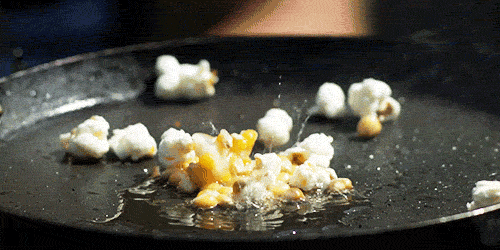
The Science of Popping Corn:
Popcorn works because each individual kernel (thanks to the hard shell) becomes its own pressure cooker, which then explodes, turning itself inside out. Inside the shell is a starchy substance and water. As the kernel heats up, the water turns into steam and the steam cooks the starch into a super hot jelly-like substance that explodes. After exploding, the water evaporates and the starch dries out, leaving the kernel flipped inside out, in the shape we know as popcorn.
Sources:





